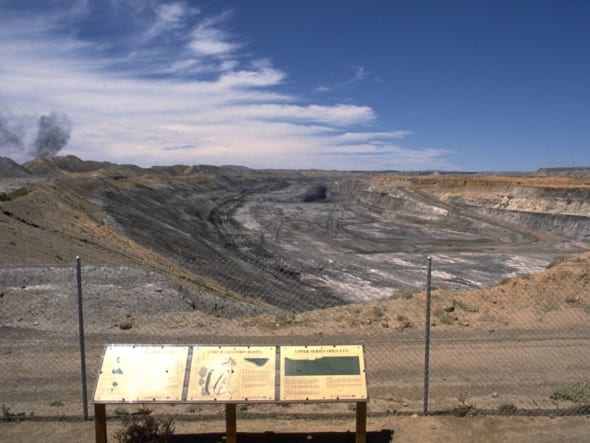Australian mining giant BHP has identified legacy mine sites in the US alone that could provide more than 500MW of wind, solar and storage capacity, as part of a review that could see a global push into renewable energy technologies.
The study of BHP’s north American assets was conducted by the US-based renewable energy think tank, the Rocky Mountain Institute, as part of its “Sunshine for Mines” research project.
The program suggests that disused mines could be an ideal site for placing large-scale solar, or wind projects, as well as storage, and BHP had engaged RMI to look at its north American portfolio of legacy sites for renewable development.
“Using the methodology, RMI identified significant potential for redevelopment and a clear subset of sites with a collective potential of over 0.5 GW,” RMI says in its report.
“For most of the sites, because of their location, solar PV emerged as the largest opportunity, with a few being well suited for wind development.
“Various storage technologies were also explored and, in some cases, recommended. The opportunities in the subset were ranked by overall value according to the variables assessed via the scorecard system. This helped BHP prioritize activities and take action on the most attractive opportunities.”
RenewEconomy contacted BHP for further comment, but did not get a reply before publication.
The use of old mine sites for renewable energy and storage projects is not new, although it is only just taking off.
In Queensland, Genex proposes a large solar farm and pumped hydro storage in the old Kidston gold mine, and in Victoria Nectar Farms is proposing a significant battery storage array, along with a neighbouring wind farm, om the old Stawell gold mine.
And in South Australia, Liberty OneSteel, the new owners of the Whyalla steel works, is looking at a pumped hydro installation in a disused iron ore mine as part of its 1GW investment in solar, storage and demand management to turn its operations green with energy.
BHP is also keeping a close eye on solar and storage, entering into a partnership for the development of the Lakeland solar and storage – the first instance where the two technologies are couple on the grid in Australia – which is due to come on line soon.
BHP has also been mulling opportunities for using solar and storage at its remote operating mine sites as an alternative to diesel or gas, following on the success of its rivals in projects such as Weipa in north Queensland and the Sandfire copper mine in West Australia.
“We want to identify the technologies that have the opportunity to materially lower emissions,’’ Fiona Wild, BHP’s head of sustainability and climate change told Bloomberg last year. “We are looking at batteries in a fringe-of-grid location and a lot of our locations fall into that category.’’
The RMI study said legacy mine sites are uniquely positioned for second lives through renewable energy development.
That’s because most medium-sized closed sites can require a staff of 5–10 people for maintenance and cost several millions of dollars a year to maintain. Might as well build a solar plant, or a wind farm, to generate some revenue to support that.
It said mine sites, once no longer producing, often became liabilities, and revenue options were limited.
“Lack of awareness surrounding the possibilities of renewables and storage development on legacy mine sites may lead to the belief that renewables are not profitable in the long run,” the report said.
“The reality, though, is that innovative renewable energy and storage solutions can establish a sustainable revenue stream, transforming legacy sites from liabilities into assets.”









